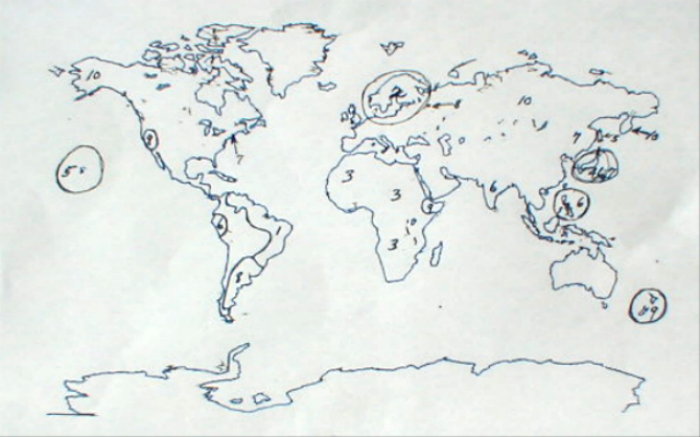
Parasitology
Lecture Exam III
Thomas P. Buckelew, Ph.D.
Identify the parasite (40 points)
II. Describe five epidemiological factors associated with the following (15 points)
1. Echinococcus granulosus
2. Clonorchis sinensis
3. Schistosoma japonicum
III. Draw the reproductive tract of any trematode or cestode of your choice. Identify the specific organism you have drawn and label the parts. If you draw a trematode, mention any major difference seen in cestodes. If you draw a cestode, mention any major difference you will find in trematodes. (10 points)
IV. Fill in the blanks (you may only use an organism once in your answers). (20 points)
ORGANISM INTERMEDIATE DEFINITIVE INFECTIVE STAGE ORGAN
HOST HOST (FOR DEFINITIVE HOST) INFECTED
DEFINITIVE
HOST
Diphyllobothrium
latum
Tenebrio molitor
Sheep
Cercaria
Small intestine
V. Identify the organism found in the area of the world as designated by the numbers on the
world map. Name the country or a country found within the designated areas. The organisms are not restricted to only those areas designated on the map. Identify one epidemiology factor which increases the parasite’s incidence. (15 points)
Organism Country Epidemiological Factor
1. 1. 1.
2. 2. 2.
3. 3. 3.
4. 4. 4.
5. 5. 5.
6. 6. 6.
7. 7. 7.
8. 8. 8.
9. 9. 9.
10. 10. 10.
